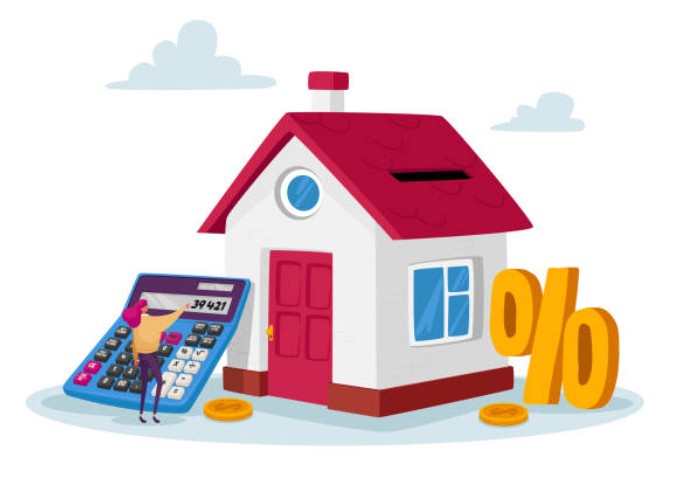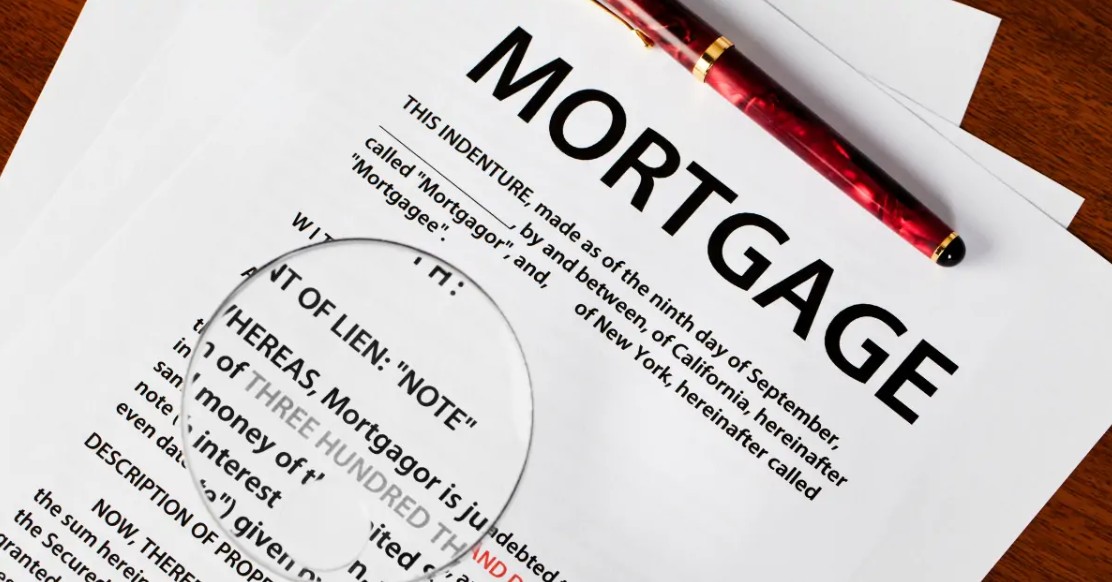If you’re asking yourself, “How much mortgage can I get?”—you’re not alone. It’s one of the most important questions prospective homebuyers in the UK need to answer before they begin house hunting or get carried away by what’s on the market. In this guide, we’ll break down how mortgage lenders determine your borrowing power, what affects the amount you can get, and how you can maximise your mortgage potential. By the end, you’ll have a clearer idea of where you stand, what steps to take next, and how to approach the application process confidently.
What Determines How Much Mortgage You Can Get?

UK mortgage lenders assess several factors to determine the maximum they’re willing to lend you. These factors include:
1. Your Income
Your salary (or combined salaries if you apply jointly) is the biggest driver of how much mortgage you can get. Most high-street lenders use income multiples, typically between 4× to 4.5× your gross annual income. In some cases, particularly for applicants with excellent credit histories and very low existing debt, lenders might extend to 5× or even 5.5×.
- Example 1 (Single Applicant):
- Gross annual income: £28,000
- Typical multiplier: 4.5×
- Estimated maximum mortgage: £126,000
- Example 2 (Joint Applicants):
- Applicant A’s income: £35,000
- Applicant B’s income: £22,000
- Combined income: £57,000
- Typical multiplier: 4.5×
- Estimated maximum mortgage: £256,500
Keep in mind that if one partner earns significantly more, the lender will weigh the combined income accordingly. If either income is unstable (e.g., recent promotion, zero-hours contract), the lender may apply a lower multiplier or ask for further evidence of continuity.
2. Your Outgoings and Financial Commitments
Lenders don’t just look at how much you earn—they also analyse how much you spend each month. Your regular outgoings (known as “debt commitments”) include:
- Existing loans: Car finance, student loans, catalogue credit, etc.
- Credit card balances: Even if you pay them off monthly, a high credit limit can count as a potential outgoing.
- Monthly subscriptions: Gym memberships, streaming services, childcare costs, etc.
- Other fixed costs: Council tax (especially important if you’re self-employed and prove this via your last P60), utilities, maintenance fees (for leasehold properties), and any other mandatory spending.
Lenders perform a detailed affordability assessment. They typically model your monthly mortgage payment at both the current interest rate and a “stress-tested” rate—usually about 3–3.5% above the actual rate you’ll be paying—to ensure you can still afford repayments if rates rise.
- Example Affordability Check:
- Net monthly income: £2,400
- Monthly outgoings: £800 (loan repayments, subscriptions, utilities)
- Affordability buffer: Lender applies a 5% interest rate stress test (even if your actual rate is 2%)
- Result: Lender calculates maximum monthly mortgage repayment you can afford is, say, £1,000. Then, based on a 25-year term, they determine the mortgage value.
3. Your Credit Score

In the UK, three main credit-reference agencies (CRAs) provide credit reports: Experian, Equifax, and TransUnion. Each uses its scoring model, but generally:
- Excellent (800+ on Experian): Opens doors to premium deals and higher borrowings.
- Good (700–799 on Experian): Still qualifies for most mainstream products.
- Fair (600–699 on Experian): Limited choice, may pay higher interest.
- Poor (<600 on Experian): Likely restricted to subprime or specialist lenders, smaller loan amounts, and higher rates.
Before applying, check your score with at least one CRA. If you spot any errors, like an old County Court Judgment (CCJ) that’s since been paid, get it corrected before submitting a mortgage application.
How to Improve Your Credit Score Quickly?
- Register on the electoral roll: This adds credibility to your address history.
- Pay bills on time: Set up direct debits for monthly utility bills and credit cards.
- Reduce credit utilization: Keep credit-card balances under 30% of your limit.
- Avoid multiple “hard” searches: Applying to many lenders in a short span can be viewed negatively.
4. Size of Your Deposit
Your deposit is the percentage of the property’s purchase price you pay upfront. Lenders typically quote mortgage deals based on the Loan-to-Value (LTV) ratio:
- 95% LTV (5% deposit)
- 90% LTV (10% deposit)
- 85% LTV (15% deposit)
- 80% LTV (20% deposit)
- 75% LTV (25% deposit), and so on.
The larger your deposit (i.e., the lower your LTV), the more competitive rates you can access, which in turn could allow you to borrow more because lower rates reduce the monthly repayment outgoings in the affordability assessment. As a rule of thumb:
- 5–10% deposit: Suitable for basic starter mortgages; rates are higher.
- 15–20% deposit: Opens up better-standard products at lower rates.
- 25% + deposit: Gives access to the most competitive deals (e.g., two-year fixed mortgages below 3%).
Regional Variations: London vs. Rest of the UK
London and the South East
- Higher Property Prices: The average London home price was around £522,000 in early 2025, compared to a UK average of about £282,000 (Nationwide).
- Income Multipliers May Be Stricter: Some lenders cap multipliers at 4× in high-priced areas, even if they stretch to 5× elsewhere.
- Additional Costs: Stamp Duty Land Tax (SDLT) thresholds are higher in London, so you’ll pay more upfront than in northern regions.
Northern England, Wales, and Scotland
- Lower Purchase Prices: You might be able to afford a detached family home on a £40,000 salary in parts of the North, whereas you’d only get a one-bedroom flat in Zone 3 of London.
- Better LTV Opportunities: With lower values, you might more easily reach a 25% deposit threshold, unlocking cheaper rates and increasing borrowing potential (thanks to reduced monthly outgoings).
- Regional Lenders: Some building societies focus on specific regions and may offer slightly more generous lending policies to local applicants.
Key Takeaway: Mortgage affordability is extremely location-dependent. If you’re relocating, never assume a loan amount you got approved for in one area directly applies elsewhere.
Self-Employed, Freelancers & Contract Workers
If you’re self-employed or on a fixed-term/contract basis, getting a mortgage is still possible—but lenders generally ask for extra documentation to verify your income:
- SA302 Tax Calculations: Usually for the last 2–3 years.
- Year-to-Date Business Accounts: Certified by a qualified accountant.
- Bank Statements: To corroborate the declared income.
Some lenders offer “self-cert” mortgages, but these are rare post-2008 regulations. Most mainstream lenders now require at least two years of consistent accounts or tax returns.
- Fluctuating Income: If your earnings vary year to year, lenders will average your income over 2–3 years. If you had a particularly high-earner year followed by a drop, your borrowing power may be based on the lower average.
- Retrospective Lending: Some specialist lenders can look at one year of accounts only, but they usually charge higher rates and require a larger deposit (e.g., 25–30%).
Government Schemes & First-Time Buyer Incentives
Several government-backed schemes can boost your borrowing capacity or reduce your initial deposit:

-
Help to Buy: Equity Loan (England)
- Closed to new applicants on 31 March 2023, but remaining participants still benefit.
- The government lends up to 20% (40% in London) of the purchase price interest-free for the first five years.
- You only need a 5% deposit and can borrow 75% from a lender (combined 95% LTV).
-
Shared Ownership
- Buy a share (25–75%) of a property via a housing association.
- Pay rent on the remaining share.
- Over time, you can “staircase” to own more (up to 100%).
- A lower purchase price means you need a smaller mortgage.
-
First Homes Scheme
- Discounted new-build homes (30–50% below market value) to first-time buyers and key workers.
- Discount remains when you sell.
- Lower purchase price reduces the deposit/mortgage requirement.
-
Lifetime ISA (LISA)
- Save up to £4,000 per tax year until you turn 50.
- Government bonus of 25% on contributions (max £1,000 bonus per year).
- Must use towards a first home purchase (under £450,000).
-
Mortgage Guarantee Scheme (Government-backed)
- Guarantees 95% LTV mortgages for properties up to £600,000.
- Lenders can offer 5% deposit loans to a wider pool of borrowers.
- Tends to apply to major high-street banks.
Important Note: Each scheme has strict eligibility criteria (income caps, property price caps, etc.). Always check current terms on the government’s website or consult a mortgage broker for the latest details.
What About Affordable Mortgage Options?
If you struggle to meet traditional lending criteria, consider:
- Guarantor Mortgages: A family member or close friend guarantees to cover your repayments if you default. This often allows you to secure a mortgage with a smaller deposit or less-than-perfect credit, but it’s a big commitment for both parties, so proceed with caution.
- Family-Assisted Deposits: Some lenders accept gifted deposits from immediate family. Proof is required (a “gift letter” confirming it’s not a loan). This can lower LTV and open up better rates.
- Joint Borrower Sole Proprietor (JBSP): In this arrangement, a family member (often a parent) is a joint borrower in name only, meaning they aren’t legally bound to make payments—only the main applicant is. Again, not all lenders offer JBSP, and those that do often have stricter underwriting.
Using a Mortgage Broker to Maximise Your Options
While it’s possible to approach lenders directly, working with an independent UK mortgage broker can save time and often uncover deals you can’t find yourself. Brokers have access to:
- Exclusive Products: Some deals are only available through intermediaries.
- Specialist Lenders: If you’re self-employed, have a less-than-perfect credit score, or need a JBSP product, brokers can match you with niche lenders.
- Fee-Free Advice: Many brokers are paid by the lender, meaning you pay no direct fee (though some do charge a broker fee, so always confirm upfront).
How to Choose a Good Mortgage Broker?
- Check their status: Must be FCA (Financial Conduct Authority)-authorised.
- Read reviews: Look for ratings on Trustpilot, Feefo, or Google.
- Ask about fees: Some brokers charge a flat fee (e.g., £500–£1,000) or an arrangement fee (e.g., 0.3–0.5% of the loan).
- Verify panel access: Ensure they work with a wide range of lenders (both high street and specialist).
Practical Steps to Discover “How Much Mortgage Can I Get?”
-
Use Online Calculators as a Rough Guide
- The majority of high-street banks (Lloyds, Barclays, HSBC, NatWest, Santander) and building societies offer free “Mortgage Calculators.”
- These calculators typically ask for gross income, deposit amount, monthly outgoings, and credit status.
- Bear in mind: These are indicative only; they do not replace a proper lender assessment or broker valuation.
-
Get a Decision in Principle (DIP)
- A Decision in Principle (also known as an Agreement in Principle) is a statement from a lender saying that, based on initial checks, they would lend up to a certain amount.
- Having a DIP in hand signals to estate agents and sellers that you’re serious. It usually lasts 60–90 days.
- Note: Applying for a DIP triggers a “hard credit check,” so don’t make multiple applications in a short span.
-
Gather Your Documentation
- Employed Applicants: Last three payslips, last P60, bank statements (usually last three months), proof of address (utility bill or council tax).
- Self-Employed/Freelancers: SA302s (last two to three years), certified accounts, business bank statements, proof of address.
- Deposit Source Evidence: Bank statements showing savings history, gift letter (if applicable).
- Identification: Passport or driving licence.
-
Compare Deals and Apply
- Once you know roughly how much you can borrow, compare fixed-rate, tracker, and discounted variable mortgage deals using comparison sites like MoneySuperMarket, Compare the Market, and MoneyHelper.
- Consider additional product fees (arrangement fees, valuation fees) when comparing deals. A slightly higher rate with no fees could be cheaper in the long run than a low-rate, high-fee product.
-
Complete the Formal Application
- Submit your full application with the lender of your choice (either directly or via a broker).
- They’ll perform full affordability checks, order a property valuation, and instruct solicitors for conveyancing once approved.
Final Thoughts
Asking “How much mortgage can I get?” is the critical first step in your UK homebuying journey. Lenders look at your income, outgoings, credit score, deposit size, and the property’s value to establish your maximum loan. Regional differences mean a certain loan amount might buy a modest flat in London but a spacious house elsewhere. Government schemes (like Shared Ownership or Lifetime ISA) can help first-time buyers access larger mortgages with smaller deposits.

Leave a Reply